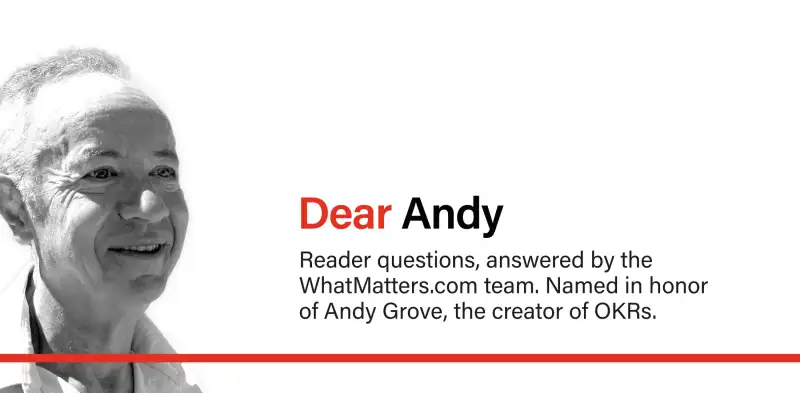Dear Andy,
I work in the public transportation department of a major city and am trying to pitch OKRs to my bosses. They seem to think OKRs are only for the tech world and are having trouble imagining how they could apply to us. They’re also nervous about using language our customers won’t understand, given our goals are generally made very public from the get-go. Can you give me some examples of OKRs for public transportation or any advice on how to tie them to our work? Some previous goals we’ve had include “increase police presence to make the subways safer” and “become a bike-friendly city.”
Sincerely,
Melissa

Hi Melissa,
Thanks for writing in!
As a frequent user of public transportation myself, I can’t tell you how happy I am to hear you’re going this “route.” I have a few ideas that can help you get your team “on board” with OKRs and some examples that will help you get on the “right track” in no time. I also promise to stop making transportation puns. Okay, here we go.
OKRs are the perfect metaphor for public transportation as they both require a shared destination and intricate coordination. What growth “fuels” a public transportation organization’s success? While there always are tracks to be fixed, upgrades to be made, and unhappy customers to assuage, there are also transformations that can reshape life in your city. Are you electrifying your transportation? Are you reducing commuter traffic? By how much? OKRs ask teams to define exactly what the most important next steps are to move the needle.
OKRs are a fabulous tool to define lofty aspirations. Goals like “make the subways safer” or “become a bike-friendly city” sound great on paper, but can be too abstract to be actionable — unless you align grounded metrics to it. This is where KRs come in. The KRs define success in tangible and measurable ways, giving everyone clear and reality-based benchmarks to strive towards. KRs also ask you to measure success in results rather than effort, which I think you’ll find extremely beneficial. For example, you can increase police presence as much as you like, but unless crime decreases by a certain percent, you haven’t really succeeded in “making the subways safer,” have you?
As far as wording goes, OKRs should be succinct, straight forward, and easy to understand — the fewer words you can say them in, the better. Anyone should be able to look at your OKRs and understand what you’re trying to do and how you’ll know when you accomplish it. You may find it beneficial to share your OKRs completely with the public (as with the case with the city of Syracuse), but many organizations prefer to keep them as internal guidelines for action.
And finally, as promised, here are a few hypothetical examples of public transportation OKRs for you.
Well Melissa I hope this has been helpful for you. Thanks so much for writing in and best of luck to you on your OKR journey!
Sincerely,
Billy from the What Matters Team

Have a question for Dear Andy? Click here to submit your OKR queries.
